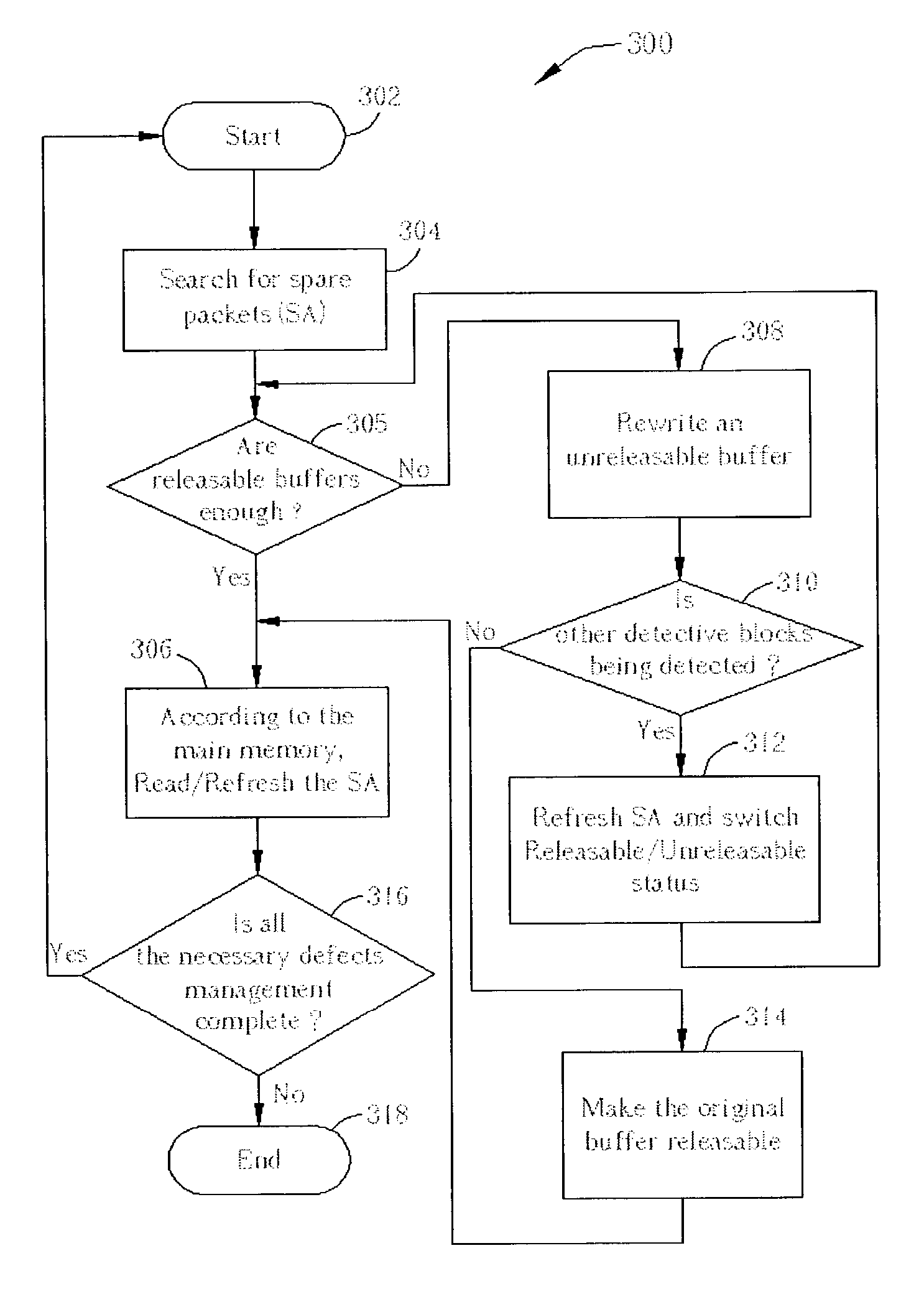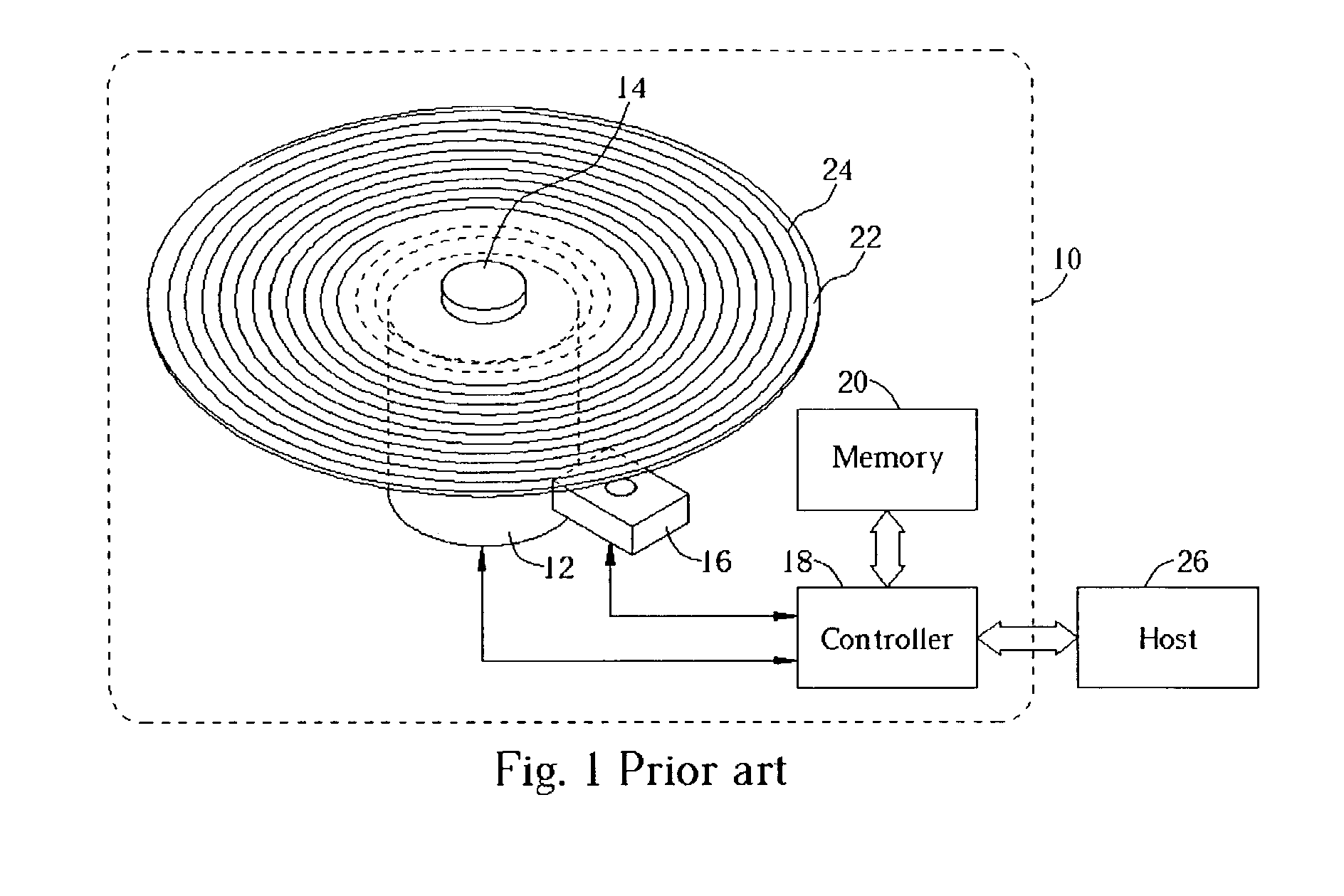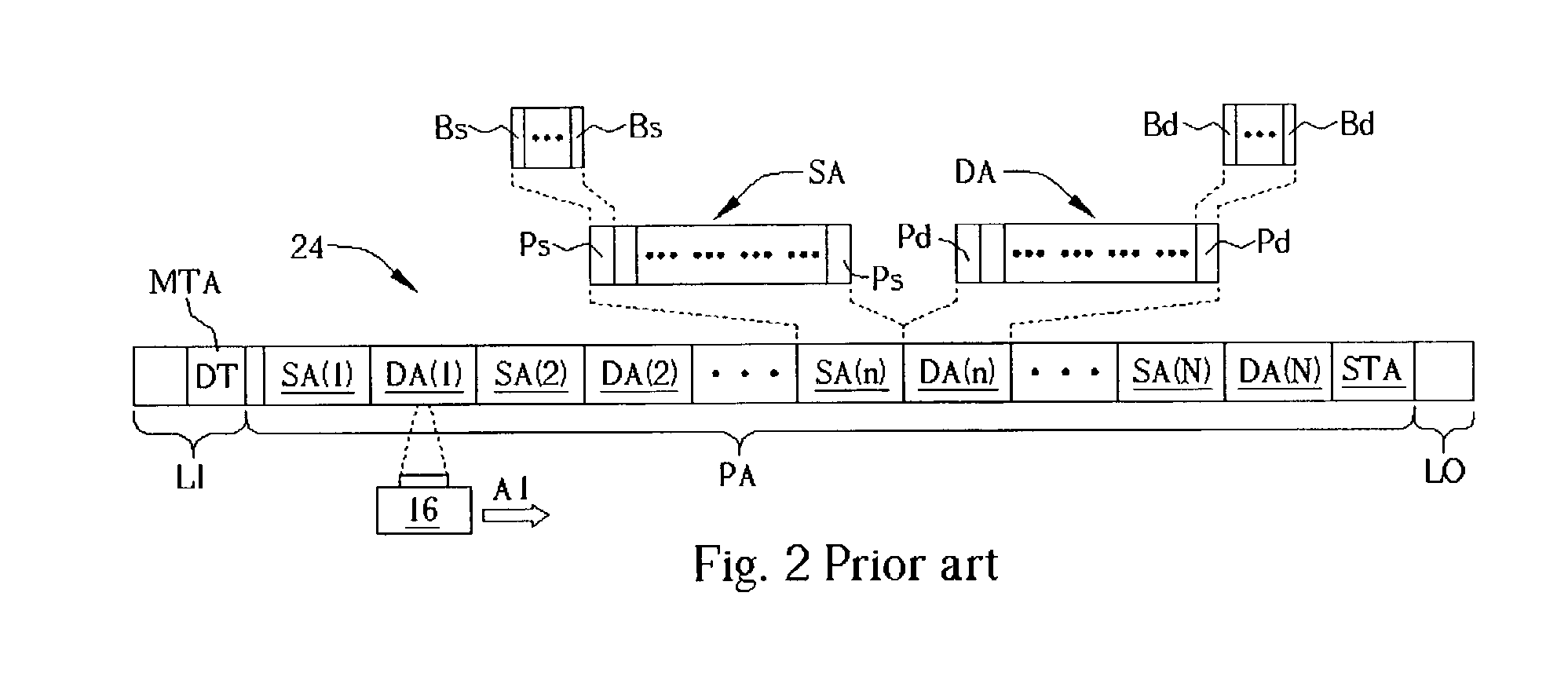Method for managing defects of optical disk
a technology of optical disk and defect management, applied in the direction of digital signal error detection/correction, instruments, recording signal processing, etc., can solve the problems of data not being able to be written correctly to defective blocks, data may also be defective, and failure to record data, etc., to achieve the effect of reducing the number of times to write spare packets
- Summary
- Abstract
- Description
- Claims
- Application Information
AI Technical Summary
Benefits of technology
Problems solved by technology
Method used
Image
Examples
Embodiment Construction
[0038]Please refer to FIG. 6. Illustrated in FIG. 6 is a block diagram of a present invention optical drive 30 for performing defects management. Like the drive 10 illustrated in FIG. 1, a user can access data on an optical disk 22 via a host 46 that controls the drive 30, which can be an optical drive of a personal computer. The drive 30 comprises a motor 32, a pickup head 36, a controller 38, and a memory 40 such as volatile random access memory for storing data during the operation of the controller 38. The motor 32 drives the optical disk 22 to rotate on a shaft 34 so that the controller 38 can access data on the track 24. The controller 38 can control the pickup head 36 to read the data wherein the pickup head 36 skips the track 24 of the optical disk 22 on the housing 34 or transfers the data stored temporarily in the memory 40 to the track 24. A main memory 48 and a plurality of buffers such as buffers 50A and 50B illustrated in FIG. 6 are provided in the present invention op...
PUM
| Property | Measurement | Unit |
|---|---|---|
| defects | aaaaa | aaaaa |
| volume | aaaaa | aaaaa |
| flexibility | aaaaa | aaaaa |
Abstract
Description
Claims
Application Information
 Login to View More
Login to View More - R&D
- Intellectual Property
- Life Sciences
- Materials
- Tech Scout
- Unparalleled Data Quality
- Higher Quality Content
- 60% Fewer Hallucinations
Browse by: Latest US Patents, China's latest patents, Technical Efficacy Thesaurus, Application Domain, Technology Topic, Popular Technical Reports.
© 2025 PatSnap. All rights reserved.Legal|Privacy policy|Modern Slavery Act Transparency Statement|Sitemap|About US| Contact US: help@patsnap.com



